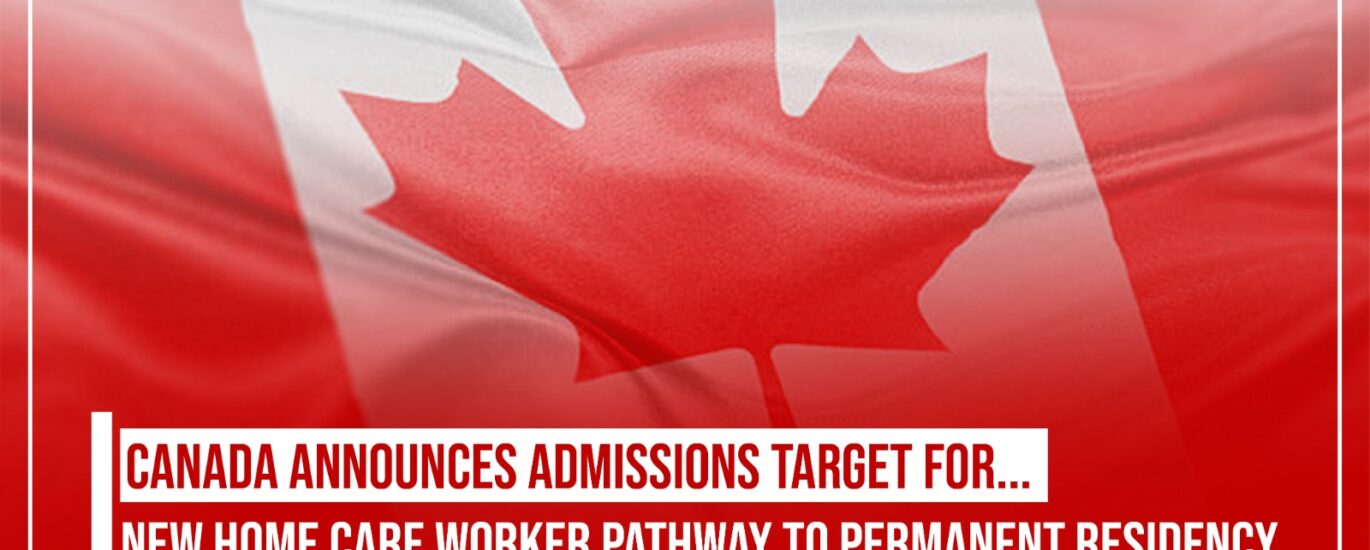In a significant development, Canada has announced the launch of the Home Care Worker Immigration Pilot (HCWP), aimed at addressing the growing demand for home care professionals in the country. This new immigration initiative will offer permanent residence (PR) to 2,750 foreign home care workers, including those who are already working in Canada, and offers a pathway for those who are out of status. With this move, Canada is taking important steps toward recognizing the critical role home care workers play in supporting the nation’s healthcare and aging population.
Key Features of the Home Care Worker Immigration Pilot (HCWP)
On March 8, 2025, Immigration Minister Marc Miller revealed that Canada plans to grant permanent residency to 2,750 home care workers under the HCWP. These workers will come through two distinct streams: the Workers in Canada stream and the Applicants not working in Canada stream. Importantly, 150 of these spots will be reserved for home care workers who are currently out of status in the country. Minister Miller expressed optimism about the future of this pilot, suggesting that if successful, it could become a permanent feature of Canada’s immigration system.
While the Workers in Canada stream will open first, on March 31, 2025, the Applicants not working in Canada stream will open at a later date, though the timeline for this has not yet been disclosed.
Eligibility Criteria for the Home Care Worker Immigration Pilot
The HCWP has been designed to be one of the most accessible pathways to permanent residency in Canada. To be eligible for this program, foreign home care workers must meet the following criteria:
- Work Experience: Applicants must have at least six months of recent, relevant work experience in home care, either within Canada or abroad. Alternatively, they can meet the experience requirement through a related education credential of at least six months in home care training.
- Language Proficiency: Applicants must demonstrate basic proficiency in either English or French. Specifically, they need to meet the Canadian Language Benchmark (CLB) level 4 in English or Niveaux de compétence linguistique canadiens (NCLC) level 4 in French.
- Job Offer: Applicants must have a full-time job offer in Canada. This can come from a private household or from an organization that directly hires home care workers to provide short-term or occasional care. Eligible organizations include:
- Home health care service providers
- Direct care agencies
- Personal care service providers in residential settings
- Pediatric home health care service providers
Home Care Worker Immigration Pilot: A Path to Regularization
One of the most important features of the HCWP is its role in regularizing the status of home care workers who have lost their status in Canada. These individuals, many of whom have been providing vital services, will now have the opportunity to gain legal status and apply for permanent residence. This aligns with Canada’s broader push for regularization measures for temporary residents who are out of status but contribute significantly to sectors in need, such as healthcare and construction.
In fact, Canada’s government has recently introduced a similar regularization pathway for out-of-status construction workers, allowing up to 6,000 undocumented workers to regain legal status and apply for permanent residence. This reflects the government’s growing recognition of the value that undocumented workers bring to essential sectors and its commitment to providing pathways to permanent residency for those who have been working in critical roles but lack formal status.
Also Read: Italy Golden Visa 2025: Requirements and Application Process for Investors
Why the HCWP is Crucial for Canada’s Home Care Sector
Canada’s aging population and increasing healthcare demands have created a growing need for skilled home care workers. With more seniors opting for home-based care instead of long-term care facilities, the demand for qualified home care professionals has never been higher. The HCWP will help fill this gap by offering foreign home care workers a clear and accessible pathway to permanent residency, ensuring that Canada can retain skilled professionals to care for its aging population.
Moreover, by providing a formal route to permanent residency for both current workers and those seeking to come to Canada, the HCWP aims to alleviate workforce shortages in this vital sector. The program is expected to reduce the reliance on temporary foreign workers and provide long-term solutions to meet the growing needs of Canada’s home care industry.
Broader Impact on Canada’s Immigration System
The introduction of the HCWP is part of a broader strategy to address labor shortages in key sectors of Canada’s economy. In recent years, the Canadian government has emphasized the importance of attracting skilled foreign workers to fill gaps in various industries, including construction, healthcare, and technology. By offering regularization pathways for workers who have been contributing to Canada’s economy, the government is not only addressing immediate workforce needs but also fostering long-term immigration policies that support the country’s economic and social growth.
The government’s approach also ensures that immigration does not exacerbate Canada’s housing challenges. By prioritizing workers who are already in the country or filling crucial positions in essential industries, Canada aims to balance its immigration goals with the need to manage population growth and housing affordability.
Looking to the Future: Regularization and the HCWP’s Potential
Minister Marc Miller has suggested that the HCWP could serve as a model for further regularization programs. If the pilot proves successful, it may pave the way for similar programs targeting other sectors in need of skilled workers. By proving that regularization can work for both workers and the economy, the HCWP could ultimately help shape future immigration policy in Canada.
As the program progresses, it is expected that additional details will be released, particularly regarding the eligibility requirements and application process for workers in the Applicants not working in Canada stream. Immigration consultants will play a key role in guiding individuals through the process, ensuring that they meet the necessary criteria and understand the steps to apply for permanent residency.
Conclusion: A Bright Future for Home Care Workers in Canada
The Home Care Worker Immigration Pilot is a significant development in Canada’s immigration landscape, offering a valuable opportunity for skilled home care workers to settle in the country permanently. With its accessible eligibility requirements and its focus on supporting both current workers and newcomers, the HCWP is poised to strengthen Canada’s home care sector, which is essential for supporting an aging population.
For home care workers interested in applying, it’s crucial to stay informed about the official opening of the HCWP on March 31, 2025, and to ensure all eligibility criteria are met. Working with an experienced immigration consultant can help streamline the application process and increase the chances of a successful outcome.
This blog post has been optimized for SEO with relevant keywords such as “Canada home care worker immigration,” “permanent residency for home care workers,” “HCWP pathway,” and “regularization of undocumented workers.”





